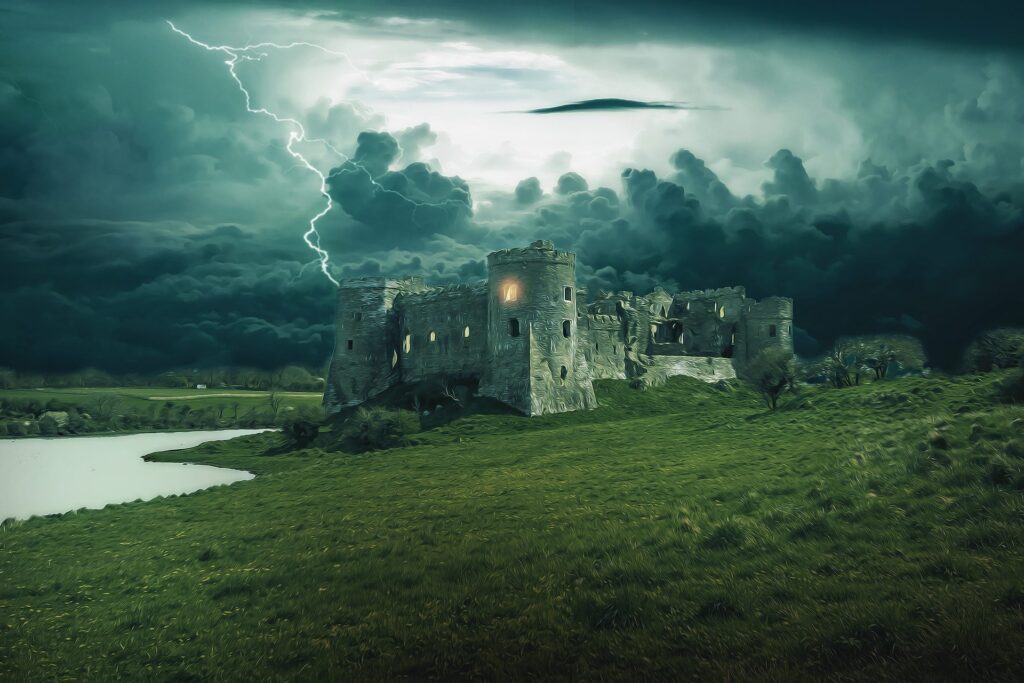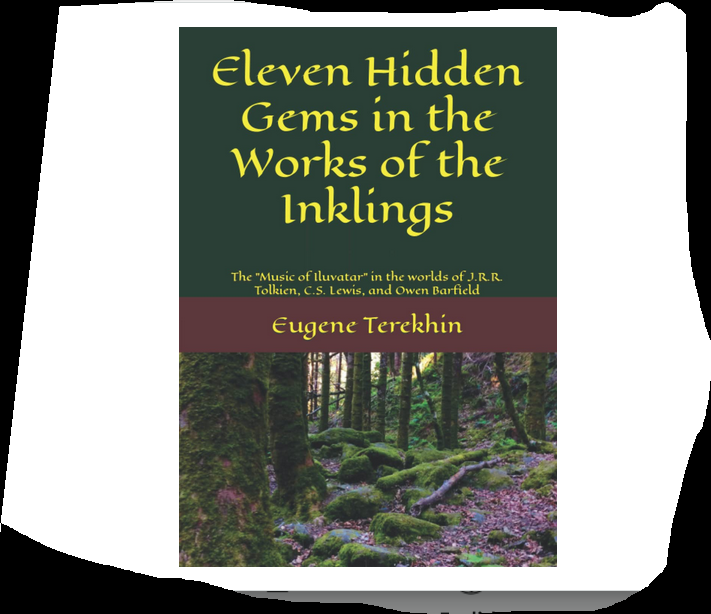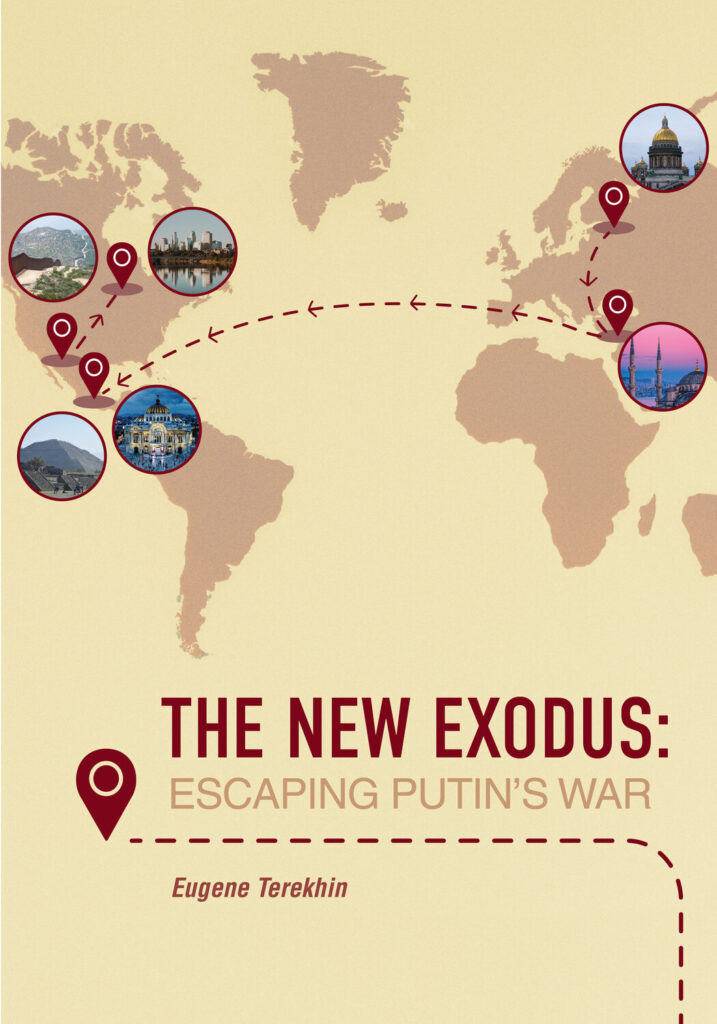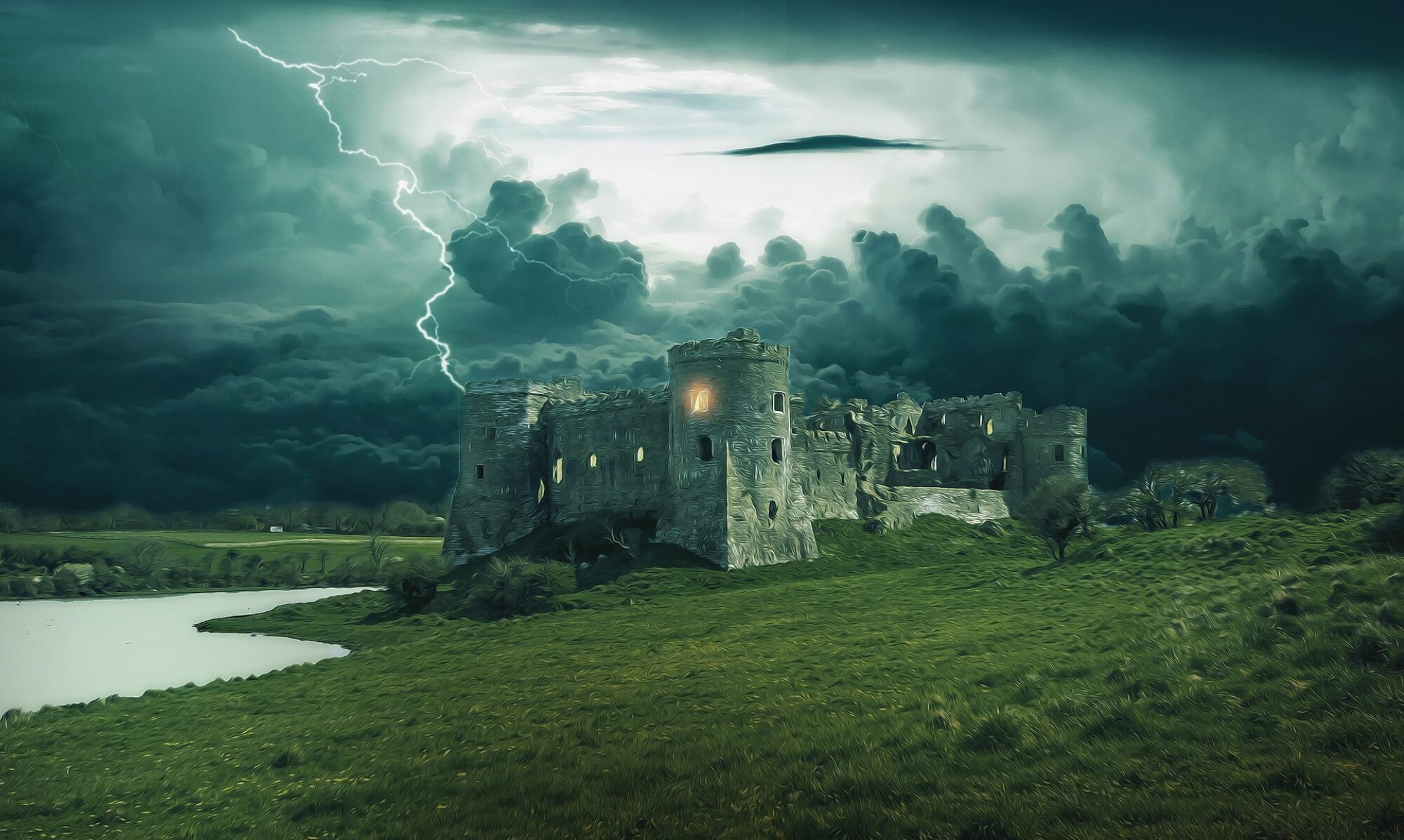
In his 1925 fairy-tale The Silver Trumpet, Owen Barfield expressed mythically what he would later expound philosophically in Saving the Appearances: A Study in Idolatry:
The life of the image should be none other than the life of imagination.
In other words, without imagination images are dead. Imagination is their lifeblood. Their substance. Their content.
When we look at the phenomena and confuse their appearance for what they represent, we take life out of them. The images are lost. They have been turned into idols by our refusal to see through them.
The moment I say: “The appearance of the tree equals the tree,” I am making an assumption that there’s nothing else to the tree than meets the eye. This mental concept is no more than an assumption (I don’t really know if the appearance of a tree equals a tree).
But I choose to see the tree through a non-participatory lens. In doing so, I refuse to go from an image to imagination.
I refuse to transcend the images with imagination (properly speaking, with faith as the ability to see the invisible). I refuse to go beyond the symbol to what it symbolizes. I take a sign for the thing it points to.
In The Silver Trumpet, this curious relationship between an image and imagination is captured in the relationship between Prince Courtesy and Princess Violet.
What is imagination in Owen Barfield’s Fairy-Tale The Silver Trumpet?
In Barfield’s philosophy, imagination is our ability to see through the images and commune with the invisible realm, which is the cradle of Meaning.
To be able to experience the representations [images] as idols, and then to be able to also perform the act of figuration [seeing through them] consciously, so as to experience them as participated, that is imagination. Saving the Appearances.
The whole drama of Prince Courtesy’s life is in his name. His name is Courtesy.
And the moment he decides to put his courtesy on the pedestal – above the Silver Trumpet – he falls into idolatry. The loss of the Silver Trumpet leads to the loss of his beloved.
By losing the Silver Trumpet he lost his ability to see through the images. He lost his imagination, the very lifeblood of the images. As a result, Violet, his beloved, dies. He gets Gamboy instead. An empty shell of Violet.
Violet who represents the experience of a participated image, dies.
Gamboy who represents a lost image, an empty idol, becomes Queen.
Now Courtesy’s life is that of emptiness – something he chose when he lost the right lens through which to look at the world.
In Saving the Appearances, Barfield says that the Old Testament writers portrayed ancient idols as emptiness itself. A thing without a soul.
It is clear that Hebrew writers associated with images the almost opposite notion of emptiness or nothingness – the absence of any spirituality whatsoever.
Prince Courtesy falls into the ultimate confusion – taking an image for the reality behind it (taking Gamboy in place of Violet). Despite all his attempts not to marry the wrong girl, he ends up with the empty shell of his beloved.
The Prince began to feel horribly nervous lest, in the excitement of the moment, he should find himself married to Gamboy instead of Violet. How dreadful that would have been!
The irony is that even though he married Violet, he eventually substituted her with Gamboy.
It happened because he put his desire to please his new wife first – above his father’s solemn charge never to part with the Silver Trumpet.
The moment he let go of the Trumpet out of fear of losing his wife’s good graces, he fell away from grace.
Cursed is the man who trusts in man and makes flesh his strength. Jeremiah 17:5-10.
When Princess Violet asked him to give the Trumpet to her to play with, he couldn’t say no.
Violet started teasing him and pouting jokingly, but he took it personally.
She was merry with jest and dancing and meant small harm; yet Courtesy, who had never heard her speak so before, was troubled inwardly and felt his heart ache for a moment, as though he were alone. So, to ease his little pain, he gave it to her with a forced smile.
He didn’t want to displease his beloved, so he chose to be courteous rather than faithful.
He didn’t want to feel the pain of possible rejection, so he put Violet first.
When we put the image first we lose the image and what it represents.
What happens when we start worshiping images?
By starting to worship the image, we disconnect ourselves from the invisible realm of the ultimate Meaning – a doorway into heaven.
By putting an image on a pedestal, we disconnect ourselves from Faerie.
To reverse the curse, we need to go all the way from the lost image to imagination.
And you can only do it when you intentionally change your lens from non-participation to participation.
In Barfield’s fairy-tale The Silver Trumpet, the curse of Prince Courtesy represents the fall of Adam – he lost his Paradise, and the land was cursed on his account.
He is ousted into the world of emptiness and black magic, where he must survive.
There must then be a second Adam, the Christ, who will rectify the faults of his predecessor.
Prince Peerio appears as the second Prince and the second Adam – symbolically.
He is the one to find the Silver Trumpet – but only because he never lost it.
He never lost his ability to see through the images.
When he first saw a portrait of Violet’s daughter, Princess Lily, he fell in love with the Princess, not the picture!
A wealthy merchant of the kingdom, who, although he was a merchant, loved good painting, had bought it a week ago for a heavy heap of gold and presented it to the Prince; and Prince Peerio, the moment he saw it, had fallen in love, not with the picture, but with the Princess.
The Silver Trumpet
He fell in love with the Princess, not with the image!
He reversed the curse by seeing through the image.
And he was the one to regain the Silver Trumpet – the only thing that could restore the inhabitants of Mountainy castle to sanity.
What are some parallels between The Silver Trumpet and Smith of Wootton Major?
In Tolkien’s Smith of Wootton Major, the tension between imagination (participation) and worshiping images (non-participation) is captured in the tension between Nokes, the self-contented fat Cook, who doesn’t believe in Faerie, and his apprentice – who turns out to be the King of Faerie.
Nokes refuses to believe in magic. Not because he hasn’t seen any miracles. But because he chooses not to see beyond the visible.
He represents someone stuck with a chosen lens – seeing only what meets the eye and filtering out all else. Even though miracles were happening before his very eyes, he remained a staunch believer in the absence of anything supernatural.
Nothing would dissuade him – not even the King of Faerie appearing before him in all his glory!
Nokes jokingly says:
“If you’ve got one of your fairy friends hidden in the Kitchen, send him to me and I’ll have a look at him. If he waves his little wand and makes me thin again, I’ll think better of him,” he laughed.
“Would you spare a few moments for the King of Faery?” the other answered.To Nokes’s dismay he grew taller as he spoke. He threw back his cloak. He was dressed like a Master Cook at a Feast, but his white garments shimmered and glinted, and on his forehead was a great jewel like a radiant star.
Nokes, struck dumb and trembling all over, tried to shout but could only whisper.
But even then, he refused to see.
He convinced himself that it must have been a bad dream caused by indigestion:
“Ugh! What a dream!” he said. “It must have been that pork at dinner.”
A prisoner of his mind, he never changed his mind even after he was made thin!
What happened to the dwarves in The Last Battle?
C.S. Lewis’s dwarves in The Last Battle were also prisoners of their minds.
They refused to “be tricked” into believing that they actually were in the “new Narnia” and insisted that they were still in the stable. Aslan himself could not convince them otherwise.
“They will not let us help them,” Aslan explained. “They have chosen cunning instead of belief. Their prison is only in their own mind, yet they are in that prison, and so afraid of being taken in that they cannot be taken out.”
In Tolkien’s Leaf by Niggle, a similar tension is heard in Tompkins’s assessment of Niggle’s art. He looks at his paintings disparagingly and says:
“Private day-dreaming. He could not have designed a telling poster to save his life. Always fiddling with leaves and flowers. I asked him why, once. He said he thought they were pretty! Can you believe it? He said pretty! ‘What, digestive and genital organs of plants?’
What Niggle saw as beauty Tompkins saw as digestive and genital organs of plants.
Why? Because of his chosen lens. Tompkins saw only what meets the eye – the mere appearance. But he didn’t see what was behind the appearance. He refused to transcend the image through imagination.
Refusal to see through the world makes the world empty and hollow, devoid of all spirituality whatsoever.
But images can be resurrected.
And we need Prince Peerio to do that – the Second Adam, “the Christ in us,” which is our only hope of glory.
Barfield wrote in Saving the Appearances:
In Christ we participate finally [in] the Spirit we once participated originally.
What is the meaning of “Christ in us”?
According to Barfield, “the Christ in us” is that seed of the Word sown deep in our soul that is able to grasp the Whole – and truly “understand the parable of the world.”
It is that seed that looks at the Sun and sees the heavenly Bridegroom.
It is that seed that looks at trees and sees Ents.
It is that seed that hears the gentle murmur of a brook and hears the Music of Iluvatar.
It is that seed that looks at people around them and sees who they are behind their appearances.
C.S. Lewis put it like this in The Weight of Glory:
It is a serious thing to live in a society of possible gods and goddesses, to remember that the dullest and most uninteresting person you talk to may one day be a creature which, if you saw it now, you would be strongly tempted to worship, or else a horror and a corruption such as you now meet, if at all, only in a nightmare.
And:
The books or the music in which we thought the beauty was located will betray us if we trust to them; it was not in them, it only came through them, and what came through them was longing. These things—the beauty, the memory of our own past—are good images of what we really desire; but if they are mistaken for the thing itself they turn into dumb idols, breaking the hearts of their worshippers. For they are not the thing itself; they are only the scent of a flower we have not found, the echo of a tune we have not heard, news from a country we have never yet visited.

Check out my new epic novel The New Exodus: Escaping Putin’s War


A very good expression of an important theme that needs to be expressed.
Well written and well done.
Thank you Evgueni.
Thanks for reading it, Owen!
The icon is the window to reality and imagination as belief is the key. The image or object of the image is not the subject of worship, but the window to knowing. Words are voiced icons, each word a window to greater truth. Your essays are sweet water in a desert. We live in an age where words and images bombard us with greater frequency and ever decreasing meaning because they are a means to an end which is themselves, rather than an indicator to what lies behind or beyond. We are starving in a sea of abundance. Your words invite like to a table set for a feast.
Thanks for your wonderful comment!